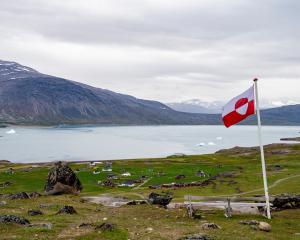
A steam locomotive lies on a cliff edge after derailing between Pukerua and Paekakariki, on the North Island’s Kapiti Coast. — Otago Witness, 6.1.1925
Dealing in superlatives
In English numeration a billion is a million squared, a trillion is a million cubed; in other numerations, European and American, a billion is a thousand millions, a trillion a thousand billions. As we have little use for billions and trillions this diversity is of no great consequence. In their celestial measurements astronomers do not talk of billions and trillions, but of "light years." Light travels at the rate of 186,000 miles a second: the miles of a light year are 186,000 multiplied by the number of seconds in a year, I don't set out the figures: imagine them if you can. This measuring stick in hand, the astronomer moves about in the abysmal depths of space, disporting himself at ease. Of Alpha Centauri, thought to be our nearest neighbours (one of the two "pointers" to the Southern Cross, is it not?), it is more convenient to set down the distance as three or four light years than as 25,000,000,000,000 miles. - by `Civis'
Finest walk in the world
The local office of the Government Tourist Department is experiencing a busy period just now in coping with the holiday traffic to all parts of Now Zealand. The bookings are heavier this season than they have been for some years past, and the most liberal patronage has been extended to the South Island resorts, such as Franz Josef Glacier, Mount Cook and the Milford Sound Track, the last-mentioned place being particularly popular.
Govt to chip in a third
The Chairman of the No 16 District Highways Council (Mr J.K. Marks) wrote to the Waikouaiti County Council stating that he had received advice from the Main Highways Board to the effect that the council's application to have the Mt Cargill section of the Dunedin-Christ-church highway declared a Government road could not be granted. In view of this decision the only basis on which a subsidy could be granted was 1 for 2, and he suggested that immediate necessary repairs be proceeded with, the Main Highways Board to fund one-third of the cost. - ODT, 20.12.1924
Compiled by Peter Dowden











